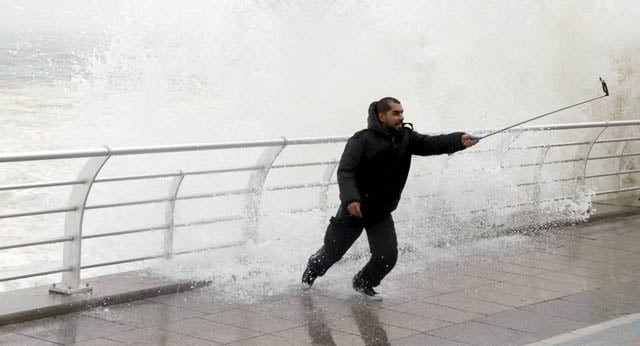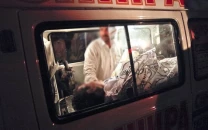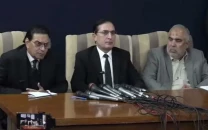Pakistani doctor publishes first research piece on selfie deaths
Dr Ayubzai said there was no medical literature on the subject when he started his work

PHOTO: REUTERS
What is the common thread among these tragic stories?
Selfies.
At least 75 people died around the world between 2014 to mid-2016 in 52 different cases of disastrous selfie attempts, reveals the research of a Pakistani medical doctor.
Two Bangladeshis die taking flood selfies as crisis worsens
The author of the publication in ‘The Annals of Emergency Medicine’ – one of the highest-ranking American journals in emergency medicine – Dr Mustafa Mehmood Ayubzai said that selfies pose a great threat to the lives of people and there is no prior medical literature on the severity of the issue.
Selfie – the Oxford English Dictionary’s Word of the Year in 2013 – is “a photograph that one has taken of oneself, typically one taken with a smartphone or webcam and uploaded to a social media website”. They are very popular with young people, but age does not always provide wisdom, as many older people have also gotten themselves killed taking bizarre or dangerous pictures.
Ayubzai, who hails from Quetta and is currently working in the emergency department at a hospital in Ireland, recognised selfies as being a potential health hazard and told The Express Tribune that in 2015 alone, the media reported 49 incidents of selfie-related fatalities with an age range of 14 to 32 years. Of these, three quarters of the victims were male.
Pakistan ranks second for most selfie deaths
He explained, “The mechanisms of injury included falls from heights, drowning, falling off of or being hit by a train, gunshot, grenade, plane crash, car crash and animal attacks.”
“It seemed that the medical fraternity did not recognise taking risky selfies as a potential health hazard,” said Ayubzai.
The author of the publication further writes that after a series of selfie-related deaths last year, the Russian ministry of health and internal affairs launched the safe selfie campaign, after which police officers hold selfie safety lessons in schools.
Girl crushed to death under train while taking selfie near Khanewal
The event that inspired Ayubzai to write a paper was an incident where a 23-year-old man while taking the ‘perfect selfie’ fell down a cliff. The doctor said the victim was lucky to have been rescued by his friends from the water and was taken to a hospital, where he was later resuscitated and treated for a concussion, rib fractures, and pulmonary contusions.
This incident made the author refer to medical literature for details, but, to his surprise, nothing was available except numerous news reports on people getting injured or killed while taking selfies.
The deadliest selfie-related incident in Pakistan in 2017 occurred just last month, when three members of a family drowned in the Neelam River after trying to take a selfie in the water. After the five-member family stepped into the water, the youngest member – a 12-year-old girl – was swept away by the water. Her teenage brother and sister tried to save her, as did her parents. The older children also drowned while the parents were saved.



















COMMENTS
Comments are moderated and generally will be posted if they are on-topic and not abusive.
For more information, please see our Comments FAQ